Genoa, in the northern region of Liguria, is a city with a long and proud history, but now its eyes are set firmly on the future. Jon Palmer reports from a city embracing its heritage in a thoroughly modern way
Photos by Jon Palmer unless otherwise stated
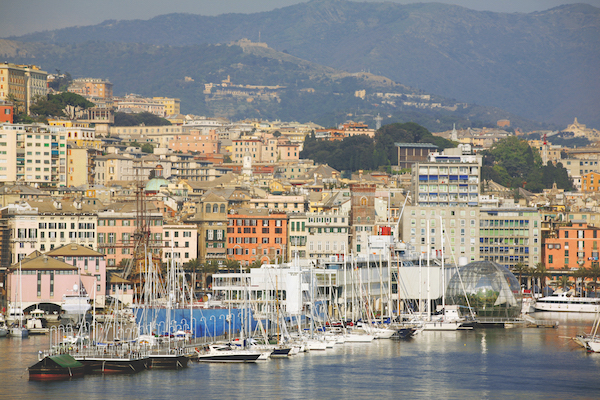
The story of Genoa is that of a fiercely independent city state that morphed into a major modern port with a thriving steel and shipbuilding industry. Despite suffering severe damage in the Second World War (really severe) it recovered to become the coastal corner of the Industrial Triangle – Turin, Milan and Genoa – that created what became known as the Italian Economic Miracle of the 1950s and ’60s.
This is the city of Christopher Columbus; and it was near here that Giuseppe Garibaldi’s Expedition of the Thousand set sail for Sicily on the quest to reunite Italy. The history of the Republic of Genoa, La Superba, goes back to the 11th century, and that’s just officially – the city has been an important port since the 4th century AD. It was one of the great maritime republics of Italy, and its influence extended across the Mediterranean.
The fingerprint of La Superba on the history of Europe – and America – is strong. But the days of steel and shipyards, of voyages of discovery and conquest, of supremacy at sea and the trade it brought, are all gone now.
So what next for Genoa?
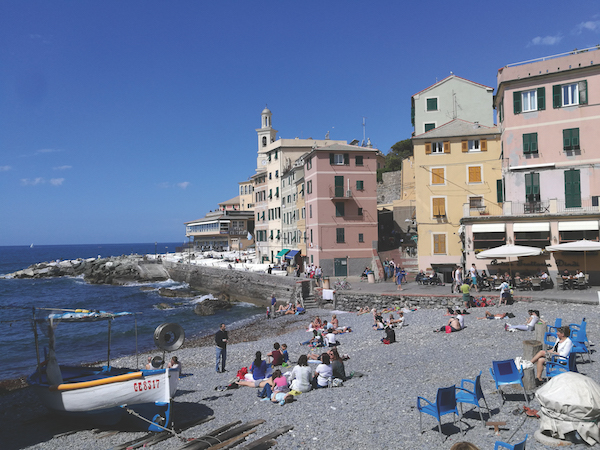
T
THE SEA
The city has always looked to the sea for its fortune. The outstanding feature of Genoa today is the Porto Antico, just as modern and cool as that of Marseille or Barcelona (even if they haven’t yet sorted out a solution for the elevated main road that runs through here on its way across the city). This is the heart of the new Genoa. Here you will find the Aquarium – the largest in Italy – and the Galata Museo del Mare, a high-tech exploration of the city’s maritime heritage, including an extraordinary immersive representation of the migrations to the New World that set sail from here. This is also where the Slow Fish festival is held.
This weekend event takes place all along the sea front at the Porto Antico. There are numerous stalls selling prepared fish to eat, as well as markets in marquees where producers sell and talk about their wares. And yes, there’s wine and music too.
As well as a place to eat and drink though, Slow Fish is also a chance to learn about the efforts being made to protect the oceans through sustainable fishing, and to find out what you can do to help. There are talks and conferences and demonstrations by international chefs on what fish to eat and how to prepare it. Admission is free, the atmosphere is convivial and there’s plenty for children too. There’s lots to see and do in Genoa but if you like fish, and if you like the idea of there still being fish in the sea for your grandchildren to enjoy, this is a weekend in itself. Slow Fish has been, to date, a biannual event and the next one, the ninth edition, is scheduled for early summer 2019.
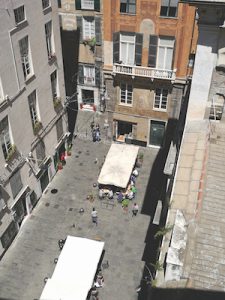
The Porto Antico is a fine space, but it’s not big. Compared to Barcelona and Marseille, Genoa doesn’t really have much in the way of a flat coastal area upon which to build. The hills rise quickly and sharply from the Porto Antico – so much so that one of the
principle ways of getting around here is not by road but by funicular, or even by lift. Yes, by lift! There are a number of public elevators in the city and people commute on them from their houses in the hills to their places of work in the city. Others use Vespas. (The Genoese might be a little different from their compatriots further east and south, but they are still Italian!)
Cars in the narrow streets of the centro storico are more trouble than they’re worth (believe me, I have tried) but this is good for pedestrians, and buildings. Here there is regeneration, too. The medieval buildings of the old city are, of course, being preserved, but they are also, slowly and piece by piece, being modernised – a delicate and painstaking task.
We stayed as guests of the Palazzo Grillo for last year’s Slow Fish. This is one of Genoa’s famous Palazzi dei Rolli, so there are restrictions on what can be done in terms of renovation, but there’s no fear of the future, no slavery to the past. The new hotel now stands as a fine example of how the ancient here is blended with the modern. But speak to the owners and they’ll tell you tales of how difficult it is to get lorries laden with materials for renovation into this part of town…
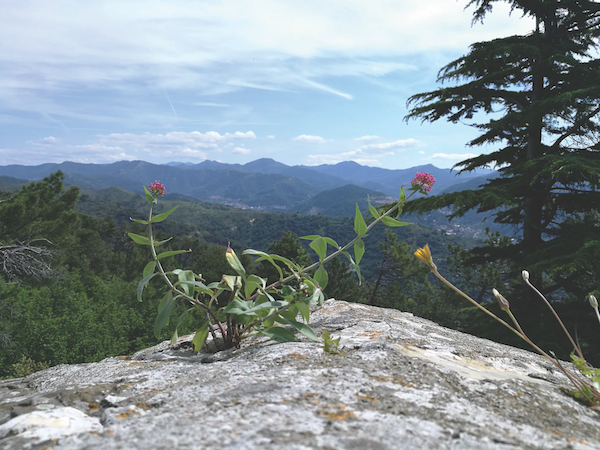
THE MOUNTAINS
And it’s not just within the confines of the city that this sense of a 21st century visitor destination is being described. Recently, the city took control of a large area of pristine park in its hinterland, the Parco Urbano delle Mura, which stretches out beyond where the city finally gives up the fight against the steep-rising hills that define it. You can take a funicular up to Zecca and set out from there to discover the old walls and forts that used to defend Genoa from attack by land. This Mura is the longest defensive wall in the world after the Great Wall of China, and if you want to see it all you’ll need good legs, and a tent. A guide is a good idea – ask at the Tourist Office if you intend to go far, as the signposting isn’t up to much.
BIO-DIVERSE PARKLAND
This is as close to wilderness as you will find on the outskirts of a major city and, after the modern fashion, it is mostly being left for nature to tend. It’s already the most bio-diverse parkland in Europe, and it is symbolic of Genoa’s aspirations to be an example of how to live in the modern world. With or without a guide, take plenty of water, and a picnic. There is a restaurant up there, the Ostaia de Baracche, that’s supposed to be very good, but we had a picnic so I can’t vouch for it.
For we northern Europeans, Italy is a lovely country. There’s art and history, architecture and archaeology, food and wine produced in time-honoured ways. There are unspoilt landscapes, picture-postcard villages, the cultural legacies of the Romans, the Greeks and the Medici… What more could you want? For many Italians, however, their country seems in danger of becoming a living museum, a series of historical sites whose only real use is to extract euros from tourists. And in this, too, Genoa is different.
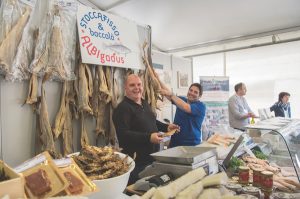
The Slow Fish festival is not about traditional boats bobbing empty in the harbour: it’s about what fishing is going to be like. The Aquarium and Maritime Museum, both as much symbols of Genoa’s far-seeing future as they are of its seafaring past, are as state-of-the-art as they get. The development of the characteristically narrow streets of the old city, while never destroying the past, look to bring modernity to it. The return of the Parco delle Mura to a pristine natural state will take generations, but “Cianin cianin ou s’è faeta Zena,” as they say. Slowly, slowly was Genoa made.
For more about Genoa’s various foodie specialities, click here
MORE INFORMATION
Tourist Office
www.visitgenoa.it
Aquarium
www.acquariodigenova.it
Maritime Museum
www.galatamuseodelmare.it
Slow Fish
www.slowfood.com/slowfish
Palazzo Grillo
www.hotelpalazzogrillo.it
Pesto di Prà
www.ilpestodipra.com
GETTING THERE
By plane
Currently, you can fly to Genoa Cristoforo Colombo direct from London Gatwick with BA or London Stansted with Ryanair, but this year Easyjet are opening new routes from Bristol, London Luton and Manchester – another sign of the city’s growing status as a visitor destination. www.genovaairport.com
By train
The direct route is to take the Eurostar to Paris, then the TGV from Gare de Lyon to Milan; change at Turin or Milan (in both cases you have to change stations too). The Riviera route would be from Gare de Lyon to Marseille and Nice and then along the coast to Genoa.
